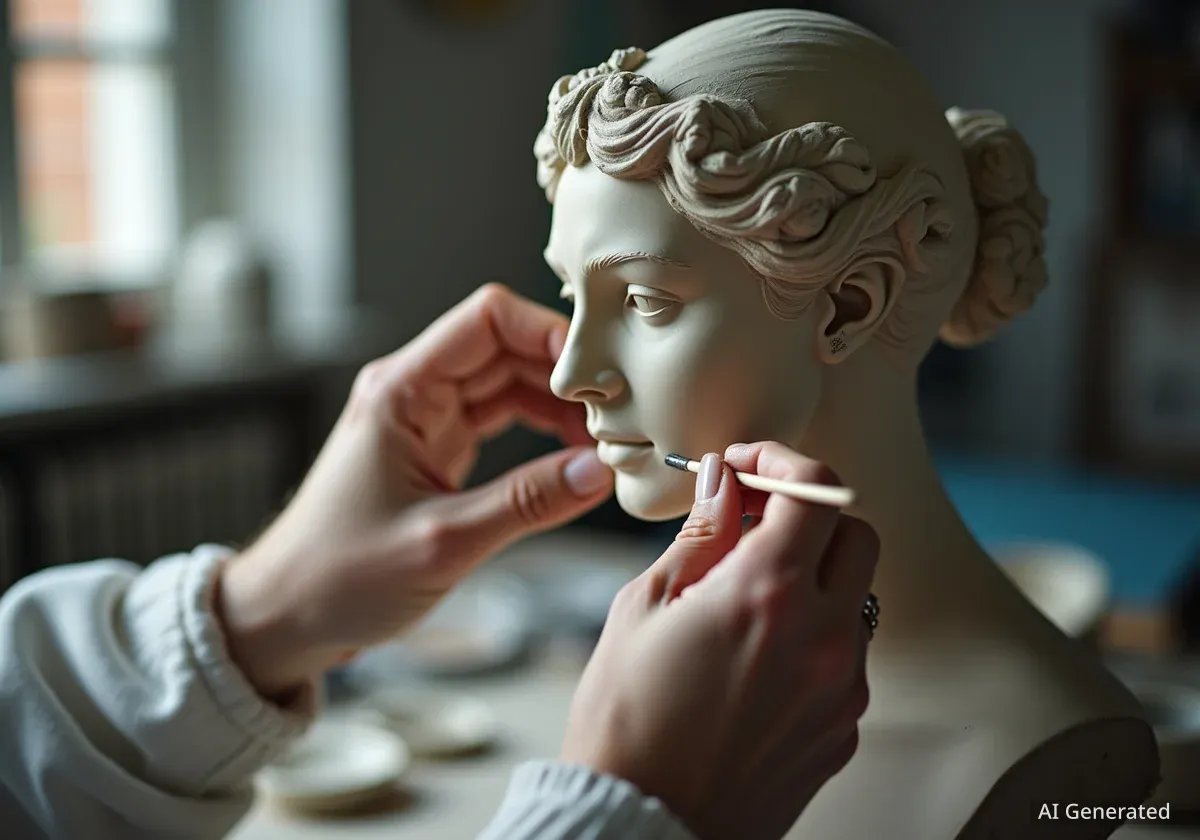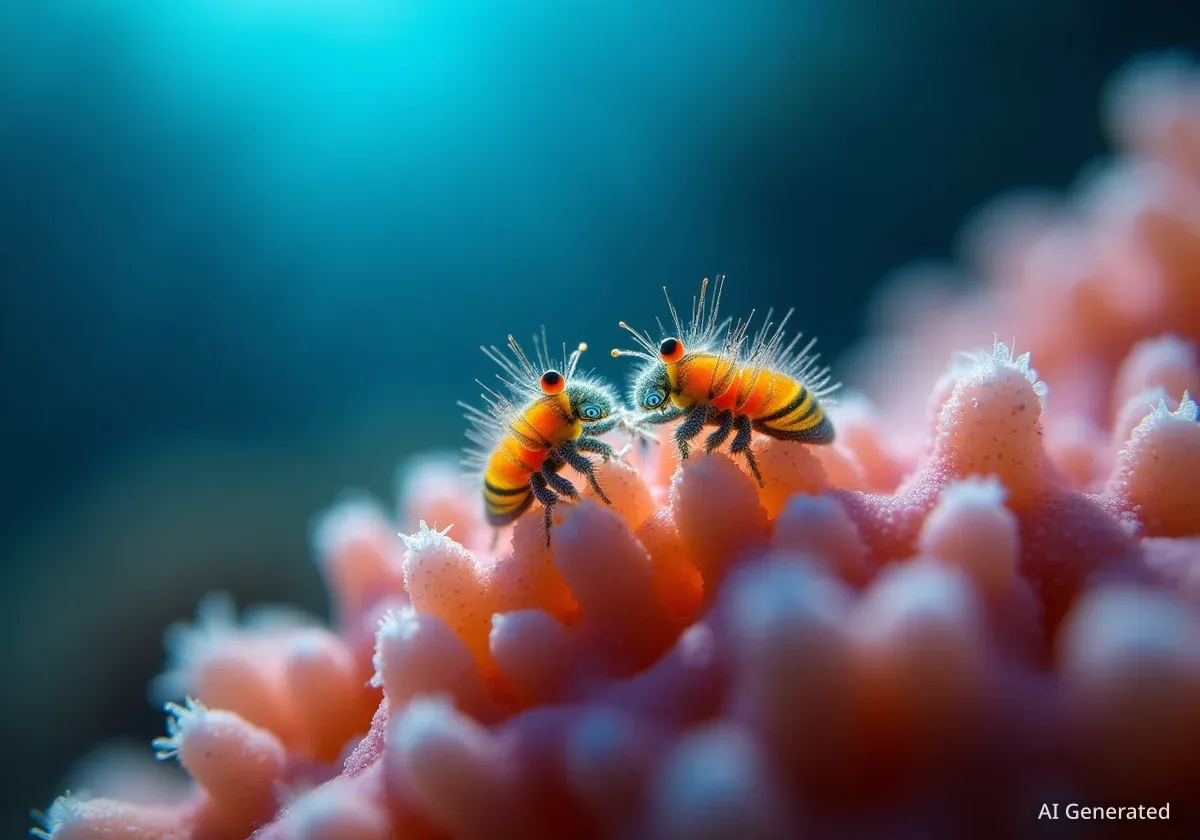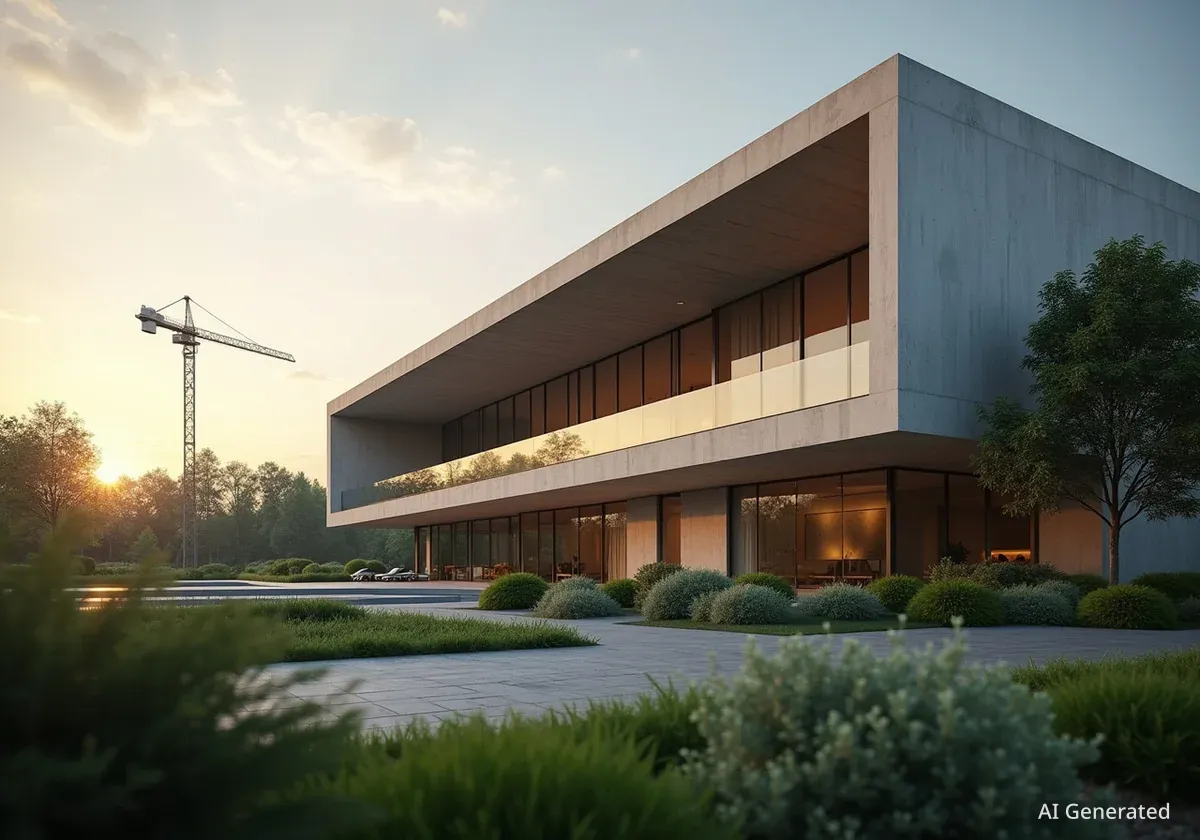Frances Petchey, a renowned sculptor with royal commissions, has shared details about her unique career. Her work includes busts of prominent figures, including members of the British Royal Family. Petchey discussed the process of creating sculptures, the financial aspects of her profession, and significant moments throughout her career.
Petchey's journey into royal sculpting began unexpectedly. She is currently showcasing her work at The Garrison Chapel with the 'Icons In Sculpture' exhibition. Her insights provide a rare look into a specialized artistic field.
Key Takeaways
- Sculptures can cost upwards of £40,000, with complex projects exceeding £60,000.
- The process for a bust typically involves three sittings and takes about four months.
- Frances Petchey has sculpted members of the Royal Family, including the late Queen Elizabeth II and Prince Philip.
- A major live television mishap taught her the importance of composure.
- She emphasizes capturing personality over perfect photographic likeness.
The Business of Sculpting: Fees and Commissions
Creating a bust is a detailed and time-consuming process. The cost for a single bust starts from approximately £40,000. This fee can increase based on the size and complexity of the artwork. Petchey typically schedules three sittings with the subject. The entire creation process, from start to finish, takes around four months.
For more intricate or larger pieces, fees can exceed £60,000. Petchey has received commissions from wealthy international clients. These clients often request sculptures of their spouses as gifts for special occasions, such as birthdays or anniversaries. Such projects sometimes require international travel, which adds to the overall cost of the commission.
Sculpture Fees
- Basic Bust: From £40,000
- Complex Works: Upwards of £60,000
- Typical Process: 3 sittings, 4 months duration
Unlike many professions, Petchey's income is not a fixed salary. Most of her earnings come from these private commissions. She also dedicates a significant portion of her work to charities, creating sculptures for fundraising events without charge. This dual approach balances commercial work with philanthropic contributions.
Petchey spends an average of two full days each week sculpting in her home studio. Another two days are dedicated to sketching, administrative tasks, and planning future events. Her holiday schedule often revolves around these pre-planned events, which are typically organized a year in advance.
A Royal Introduction and Memorable Sittings
Petchey's very first sculpture, created around 45 years ago, was of her late father playing the violin. Her connection to the Royal Family began through her late husband, Sir Jack Petchey, who was involved with the London Youth charity. Prince Philip, the Duke of Edinburgh, was the patron of this charity.
Path to Royal Commissions
Frances Petchey's initial royal connection came through the London Youth charity, where her husband was involved and Prince Philip served as patron. This informal introduction led to her first royal sitting.
After seeing some of Petchey's early work, the charity suggested she might ask Prince Philip to sit for her. To her surprise and delight, he agreed. This led to her first informal visit to Buckingham Palace. It marked the beginning of her distinguished career as a royal sculptor.
Petchey describes all members of the Royal Family she has sculpted as "utterly charming, welcoming, and a true pleasure." When asked to choose a favorite, she consistently names Her Late Majesty The Queen. Petchey found the Queen to be a remarkable role model and an incredible inspiration, both personally and professionally, until her passing.
"She had such a wonderful presence, the ability to make you feel instantly at ease, and she was exactly as you would hope and expect our Queen to be."
Each time Petchey drove into the Buckingham Palace courtyard, she was impressed by the blend of formality and warmth. Staff members, dressed in tails, would greet her and assist with carrying her art materials. They would then guide her to a private room where the sculpting sessions took place.
During these sittings, special markings on the floor indicate where a dress or robe would naturally fall. This detail is crucial for ensuring the accuracy of the sculpture. Before each session, Petchey was always offered a cup of tea, a thoughtful gesture that allowed her to relax before meeting a member of the Royal Family.
The Art of Likeness: Challenges and Techniques
The most challenging aspect of sculpting, according to Petchey, is accurately capturing the precise proportions of the face. This requires meticulous measuring using calipers. One particularly difficult area is the distance from the chin to the ear. Even a slight inaccuracy in this measurement can compromise the likeness of the subject.
During live two-hour sculpting sessions, Petchey maintains a constant visualization of the subject in her mind. Every piece of clay she adds must be placed correctly in that moment. She emphasizes that she never alters the face once she returns to her studio. This immediacy is vital for capturing the sitter's true likeness. While she may refine the hair later, the essence of the face is always created and preserved during the live session.
Sculpting Challenges
- Capturing precise facial proportions.
- Meticulous measuring with calipers.
- Distance from chin to ear is particularly tricky.
- No time for corrections during live sessions.
Petchey notes that her subjects are typically established individuals who have achieved significant accomplishments. As a result, they often approach the sittings without insecurity. They understand the goal is to create an artist's impression, not a photographic replica. Before each sitting, Petchey makes an effort to spend time with the subject, offering tea and engaging in conversation. This helps them relax and allows their true personality to emerge, leading to a stronger and more authentic sculpture.
She has created approximately 500 sculptures in her career, with about 250 of them being busts. The Queen remains a standout subject for Petchey. She cherishes the opportunity to have spent that dedicated time with Her Majesty, an experience she never anticipated as a self-taught artist.
Unforeseen Challenges and Modern Tools
Petchey recounted her biggest mistake during a live television appearance on The One Show. Just before going live, the trestle table holding all her sculpting materials collapsed. She remained calm, and with the quick assistance of the crew, everything was reassembled without the viewers realizing the mishap. This experience taught her the importance of composure during live sessions and the practical lesson of avoiding trestle tables for future work.
For events, Petchey often performs live sculptures that take around two hours. Recently, she sculpted Dame Judi Dench for her 90th birthday and Ray Winstone. After these live sessions, she returns to her studio to refine the work further.
Some sculptures are created from photographs, such as her work of Billy Bremner. She plans to use this method for a sculpture of Sir Christopher Wren. When not working live, a sculpture can take several months to complete, depending on the required detail and timeframe.
Artistic Philosophy
Frances Petchey values sculptures that clearly represent their subject. She finds it difficult to connect with abstract pieces that command high prices but lack clear meaning. Her focus remains on capturing character and presence.
Petchey refrains from criticizing other artists' work, acknowledging the effort involved in any creation. However, she sometimes struggles to connect with highly abstract pieces that command significant sums but leave her unsure of their intended representation. She believes art should communicate clearly.
Regarding modern technology, Petchey acknowledges that AI allows for scanning individuals for sculpture work, which is an amazing development. While it simplifies the process for artists, she believes AI-generated sculptures will never possess the same character and presence as those created in person or live. She also notes that this technology can be quite expensive.
The one thing Petchey dislikes about her job is the mess. Despite being a tidy person, clay inevitably gets everywhere. Once it dries, it is difficult to remove. She must be careful around white furniture, her clothes, and even her hair. Keeping her fingernails clean is a particular challenge.





